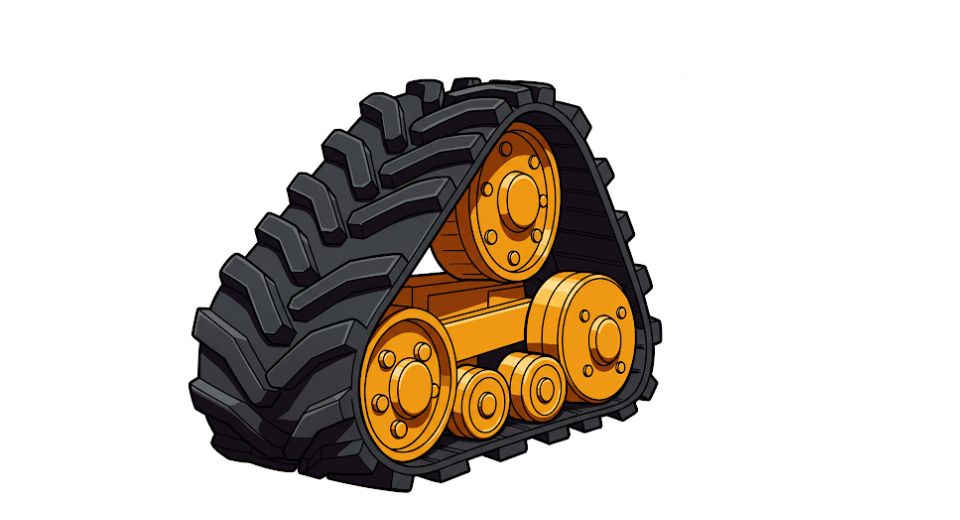
Apr 07, 2025

The Metastat Insight report indicates that several factors affecting the agricultural equipment sector are enabling rapid growth within the Global Agricultural Rubber Track market. The rubber tracks have grown extensively popular for their performance and durability in agriculture machinery. As modern practices demand more reliable and efficient equipment, the demand for agricultural rubber tracks continues to rise. Rubber track technology has improved with modern materials and designs and now offers important advantages over conventional steel tracks with respect to traction, soil compaction, and maneuverability in uneven terrain. The ability of these tracks to support the performance of agricultural vehicles such as tractors and harvesters is further pushing the adoption.
Global Agricultural Rubber Track market is estimated to reach $1,501.8 million in 2025 with a CAGR of 6.0% from 2025 to 2032.
Sustainable farming has a huge influence on the demand for agricultural rubber tracks. Rubber tracks are gentler to the soil than metal tracks, compaction being the main issue during growing times when farmers are trying to protect the health of their land. With increasing global pressure on the agriculture industry to be environmentally friendly, farmers consider it worthwhile to invest in machinery that would offer long-term benefits in terms of repair and maintenance while also offering good fuel efficiency. The global agricultural rubber track market is responding to these demands with products that not only enhance machine performance but also promote sustainable farming practices.
With respect to technology innovations, this too has led the growth of the agricultural rubber track market. The manufacturers are forever trying to develop newer tracks that are resistant to the heavy requirements of current agricultural practice, often dealing with extreme weather applications. Rubber tracks maximize traction during harvesting or tilling muddy fields. As weight distribution reduces wear-off of equipment and efficiently allows machines to work under adverse conditions, tracks gain a more common place in agricultural innovations. These innovations are essential features in all modern farm machinery, focusing on productivity and minimizing downtime.
Automated agriculture, globally considered for a long stretch, has been pushing advances in the agricultural rubber track market. Automated systems require components that can withstand rigorous daily operations. Rubber tracks, being durable and giving good traction, are well-matched with automated agricultural equipment gaining popularity among precision farmers. Such tracks allow automated systems to maneuver planting, irrigation, and harvesting tasks with little human intervention, thus promoting operational efficiency while cutting down labor costs.
Besides the advent of new technologies, rubber tracks are increasingly adopted these days in various geographies, mostly in less developed ones. Emerging markets in Asia-Pacific, Latin America, and Africa have shown promises to become growing markets for agricultural rubber tracks, with their frontline upgrading of agricultural practices because of modernization activity. With a majority of farmers in these regions switching toward mechanization, demand for rubber tracks would grow exponentially. Increasing farmers' awareness of the value-adding features that rubber tracks add to farming such as increased fuel efficiency and reduced environmental impact is also a driving force.
Another thing that is pushing the market is the adoption of big farms, where heavy machinery tends to be used most by the crop growers. New areas for agricultural rubber track play the critical task of operating above the standard performance level for equipment. The more these large-scale farms become popular, the more requirements tend to be put on having trusted, heavy-duty tracks. Here, rubber tracks are a favorite because they can work well under heavy machinery and maintain traction on soft and uneven surfaces. This has increased the market for these tracks, especially in parts of the world that commonly practice large-scale agricultural operations.
Overall, the Global Agricultural Rubber Track market, as represented in Metastat Insight, is growing considerably with influences from technological advances, increasing demands for sustainable farming practices, and the shift towards automation in agriculture. The market for agricultural rubber tracks is bound to continue growing, as farmers more and more invest in machinery that increases their productivity and reduces environmental impacts. In fact, with optimal performance, durability, and wide-ranging use to farm conditions, rubber tracks will not only take their places in the important elements of modern agricultural equipment but also seem to inherit the future. Thus, the future of the agricultural rubber track market is bright, and the advancements will lead to these tracks remaining part of the evolution of agriculture globally.
Drop us an email at:
Call us on:
+1 214 613 5758
+91 73850 57479